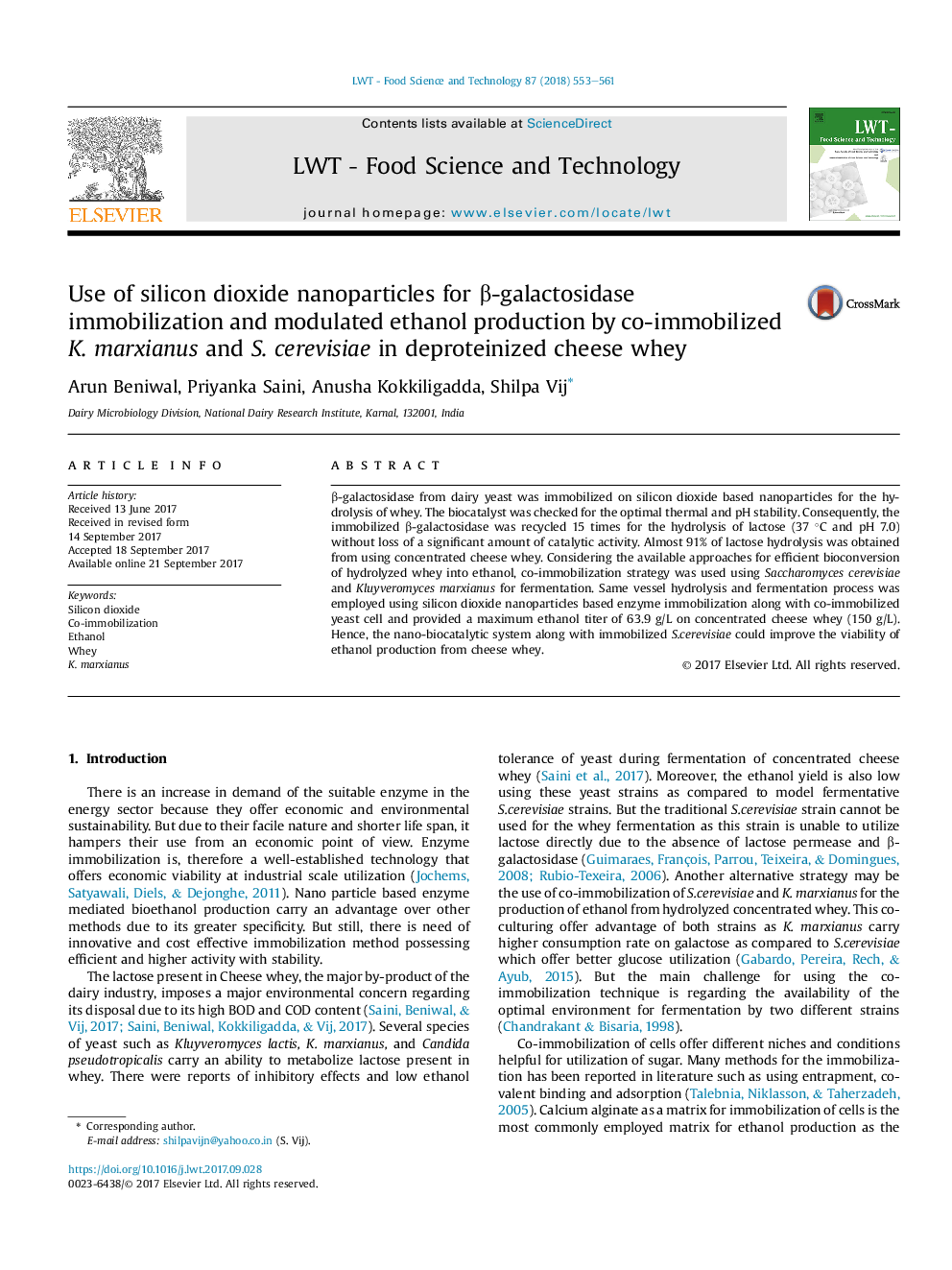| Article ID | Journal | Published Year | Pages | File Type |
|---|---|---|---|---|
| 5768642 | LWT - Food Science and Technology | 2018 | 9 Pages |
â¢Immobilized β-galactosidase nanoparticles resulted in a higher hydrolysis of whey.â¢During batch fermentation in cheese whey, co-culture yielded higher ethanol than single culture.â¢Same Vessel hydrolysis and fermentation process resulted in a decrease in fermentation time.
β-galactosidase from dairy yeast was immobilized on silicon dioxide based nanoparticles for the hydrolysis of whey. The biocatalyst was checked for the optimal thermal and pH stability. Consequently, the immobilized β-galactosidase was recycled 15 times for the hydrolysis of lactose (37 °C and pH 7.0) without loss of a significant amount of catalytic activity. Almost 91% of lactose hydrolysis was obtained from using concentrated cheese whey. Considering the available approaches for efficient bioconversion of hydrolyzed whey into ethanol, co-immobilization strategy was used using Saccharomyces cerevisiae and Kluyveromyces marxianus for fermentation. Same vessel hydrolysis and fermentation process was employed using silicon dioxide nanoparticles based enzyme immobilization along with co-immobilized yeast cell and provided a maximum ethanol titer of 63.9 g/L on concentrated cheese whey (150 g/L). Hence, the nano-biocatalytic system along with immobilized S.cerevisiae could improve the viability of ethanol production from cheese whey.
